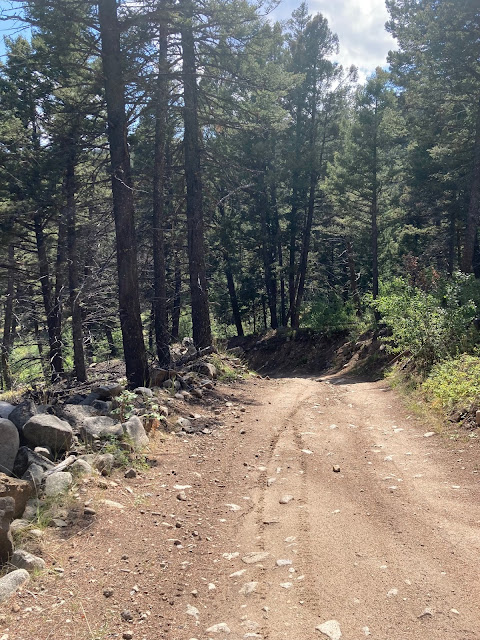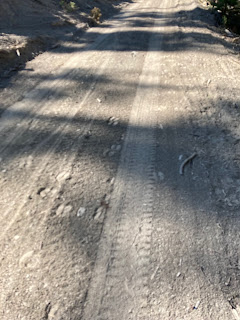In the early 1980s, William Least Heat-Moon published a book called Blue Highways. It was an odyssey that avoided the interstate and followed the highways marked as “blue” in his older analog maps: probably US routes, state highways, county roads that connected small town to small town, many of which were bypassed and devastated when the interstate was built. It’s a good read.
The Great Divide Mountain Bike Ride takes this a step further: the route never goes on the interstate and rarely goes on the state routes unless there is no corresponding road. So we’re talking a lot of gravel and dirt roads.
That could be enough to say until you experienced the variety of gravel and dirt.
There are some gravel roads that are packed hard so it is almost like riding on pavement and there are some with loose thick gravel that makes it feel as though you are riding a bike through slush or sand. There are some where fist-sized rocks have dislodged and/or embedded and where boulders need to be avoided. When descending on gravel roads, you may end up negotiating all types of gravel within a hundred yards: hard-packed to slushy to rocky. At times it can feel like water skiing, sliding on black ice, or rolling over a trillion loose marbles. It’s crazy.
Ascending on gravel roads provides the same challenges except without the benefit of momentum. Depending on the speed one can muster on an ascent, gravel mobilizes to slow your roll in a number of ways: 1) every rock bigger than 3/4” is an obstacle and will slow you down, if not stop you: larger stones are even more effective; 2) everything is moving: when your front tire hits the gravel the tire can slide sideways because the gravel is not fixed; when you are hoping for traction from the rear tire which propels you, the tires can spin off the rocks, giving you a feeling of two feet forward, one foot back; 3) depending on the depth of the gravel, it can feel like snowplowing.
Another unique effect that is common is washboarding, that insufferable condition where repeated passes by cars creates a regular series of mounds or ripples that, going downhill, can loosen the fillings in your teeth, catapult secure items from your bike, and create havoc in terms of keeping the bike upright. Uphill it’s just as annoying and can feel similar to a canoe trying to cross the wake of a motorboat at a right angle (whop, whop, whop) until the road levels out.
The amount of gravel used is ostensibly the best way to maintain these roads and in most cases their condition is impressive. Most importantly, these are the “roads least traveled” and it does make all the difference: fewer cars, the ability to use the whole road when trying to find the literal path of least resistance, and a powerful connection to the curvature of the each mountain’s topography that one just won’t experience on a paved highway.
When we do connect on a paved road, it feels like silk: no resistance, easy to pedal—until that first semi passes by five feet away to break the reverie.
The Great Divide Mountain Bike Ride is mostly gravel roads and it works. Not the fastest way to travel, but the benefits certainly outweigh the shortcomings, as frustrating as they can be at times.









No comments:
Post a Comment